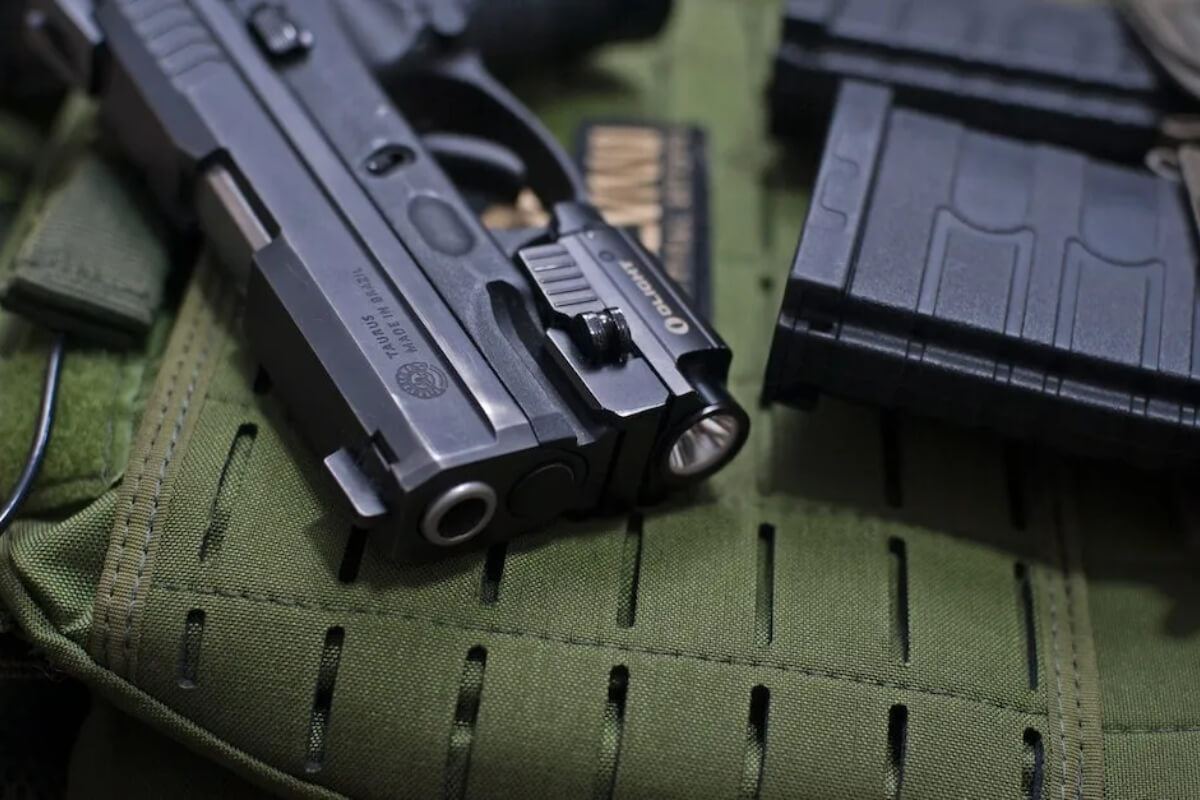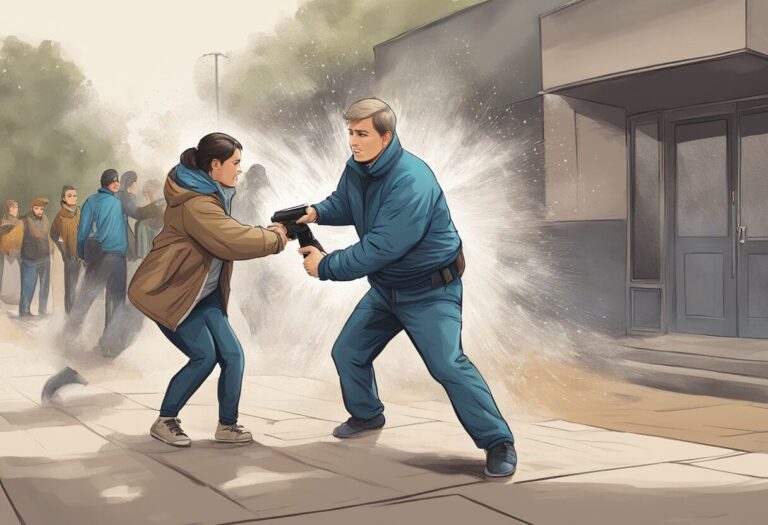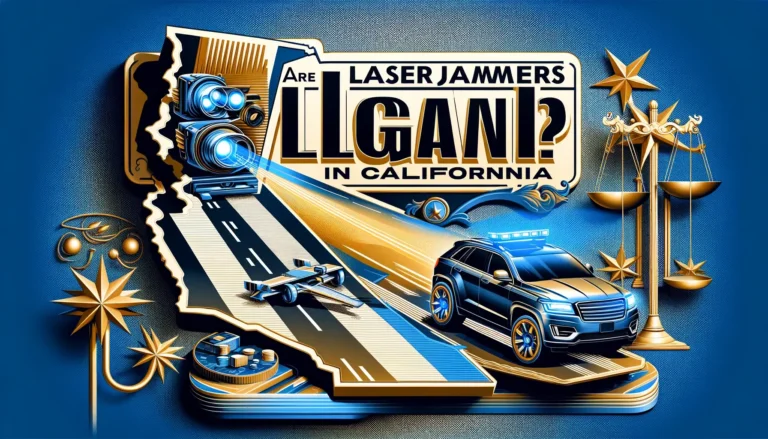Are Compensators Legal for Guns in California? Guide

If you’re a gun owner in California, you may have wondered: “Are compensators legal in California?” The short answer is yes, compensators are generally legal for both handguns and rifles in the state. However, there are some important nuances and restrictions you need to be aware of, especially when it comes to handguns with detachable magazines.
This article clears up the confusion by covering the types of compensators, legal attachment methods, special cases, and how to stay compliant with state regulations. Whether you’re an experienced shooter or new to compensators, you’ll find the information you need here.
Understanding Compensators
Before we delve into the legal aspects, let’s first understand what compensators are and how they work. A compensator is a muzzle device designed to redirect the hot gases expelled from a firearm’s barrel. This redirection of gases helps reduce recoil, muzzle rise, and muzzle flip, resulting in better control and faster follow-up shots.
There are three main types of compensators:
- Thread-on compensators: These screw directly onto the threaded muzzle of the barrel.
- Clamp-on compensators: These devices clamp onto the barrel, eliminating the need for a threaded muzzle.
- Integral compensators: These are built into the barrel itself, forming a single unit.
Using a compensator can provide several benefits, including:
- Improved accuracy and shot-to-shot consistency
- Reduced felt recoil, making shooting more comfortable
- Better muzzle control, especially for rapid-fire sequences
- Increased shooting enjoyment and confidence
California Gun Laws Overview
California is known for having some of the strictest firearm regulations in the United States. To understand the legalities surrounding compensators, we need to first look at the state’s definition of an “assault weapon.”
Under California law, an assault weapon is defined as a semi-automatic, centerfire rifle or semi-automatic pistol that has certain features, such as a threaded barrel, detachable magazine, and forward grip. Additionally, California has restrictions on magazine capacity, generally limiting them to 10 rounds or less.
Legality of Compensators in California for Handguns
Now, let’s dive into the legality of compensators for handguns in California. The key issue here is the threaded barrel.
In most cases, handguns with detachable magazines cannot have threaded barrels in California, as this would classify them as assault weapons. However, there are two legal ways to use a compensator on a handgun:
Non-Threaded Barrel Attachment Method
Some compensators are designed to clamp onto the barrel or replace components like the barrel bushing, eliminating the need for a threaded barrel. These types of compensators are generally legal in California, as they do not violate the assault weapon laws.
Popular examples of clamp-on compensators include the Strike Industries Mass Driver and the Radian Ramjet. These devices can be easily installed on most modern handguns without any permanent modifications.
Permanently Affixed Compensators
If you do have a threaded barrel on your handgun, you can still legally use a compensator in California, but it must be permanently affixed. This means the compensator cannot be easily removed or swapped out.
To permanently attach a compensator, a qualified gunsmith must use methods like soldering, welding, or the installation of a blind pin. Simply using thread locker is not considered a permanent attachment under California law.
It’s important to note that the permanent attachment must be done before the handgun is assembled. Once the compensator is permanently affixed, it becomes part of the barrel and is no longer considered a removable muzzle device.
Examples of popular handgun models and legal compensator options include:
- Glock 17/19: Radian Ramjet, Strike Industries Mass Driver
- 1911: Wilson Combat Compensator (permanently affixed)
- CZ 75: Cajun Gun Works Compensator (permanently affixed)
Compensator Laws for Rifles in California
When it comes to rifles, the laws surrounding compensators in California are much more straightforward. Unlike handguns, there is no restriction on threaded barrels for rifles in the state.
This means that you can freely attach a thread-on compensator to your rifle without any permanent modifications or special attachment methods. Simply screw it on, and you’re good to go.
However, it’s still important to be aware of any overall length or barrel length requirements for your specific rifle. Some configurations may require a compensator to meet these legal minimums, in which case the compensator would need to be permanently affixed.
Special Cases – AR/AK Pistols and Overall Lengths
There are a few special cases where compensator laws in California get a bit more nuanced. One such case is AR and AK pistols.
For these types of firearms, the legality comes down to whether they have a fixed or detachable magazine. If the magazine is detachable, the same rules apply as for handguns – no threaded barrels unless the compensator is permanently affixed.
However, if the magazine is fixed (meaning a tool is required to remove it), then the firearm is not considered an assault weapon under California law, and a threaded barrel with a removable compensator is generally allowed.
Additionally, there are overall length and barrel length requirements for pistols in California. In some cases, a permanently affixed compensator may be necessary to meet these legal minimums, even if the magazine is fixed.
Finding California-Compliant Compensator Setups
With all the nuances and specific laws surrounding compensators in California, it can be challenging to determine if a particular setup is legal or not. The best approach is to do thorough research and consult with knowledgeable sources.
Start by checking the manufacturer’s specifications for your firearm and any compensator you’re considering. Look for mentions of California compliance or suitability for use in the state.
Additionally, reaching out to local gun ranges, dealers, and reputable gunsmiths can provide valuable insights. These professionals deal with California’s gun laws daily and can offer guidance on compliant setups.
Online resources like the CalGuns forum can also be a great place to gather information and learn from experienced California gun owners.
The Bottom Lines
In conclusion, compensators are legal for both handguns and rifles in California, but there are important restrictions and considerations to keep in mind, especially when it comes to handguns with detachable magazines.
To ensure your firearm setup remains compliant, remember these key points:
- For handguns, either use a non-threaded barrel attachment method or have a compensator permanently affixed by a qualified gunsmith.
- Threaded barrels with removable compensators are generally allowed for rifles, but double-check overall length and barrel length requirements.
- Special cases like AR/AK pistols may have additional nuances based on fixed or detachable magazines and overall lengths.
- Always consult reliable sources, such as manufacturers, local experts, and online communities, to ensure you’re following the latest laws and regulations.
By understanding the legalities surrounding compensators in California and taking the necessary steps to comply, you can enjoy the benefits of these muzzle devices while staying on the right side of the law.






